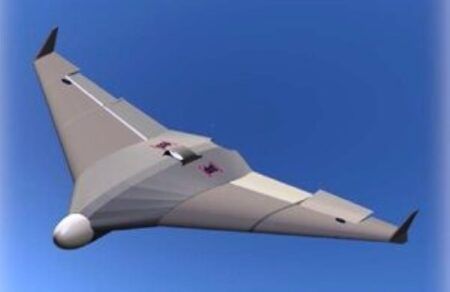The Joint Economical Sled Track Rocket (JESTR) project is developing sled track motors purpose-built for high-performance short burn times that are structurally stable under sled track conditions.
Sled tests are used to develop weapons systems and are seen as an interim step between laboratory and flight testing.
The rocket motors currently used for sled tests are repurposed from Cold War-era missiles. The motors work for sled track testing because of their short burn times, enabling them to achieve fast acceleration over the relatively short track lengths. However, they are limited in terms of quantity and capability.
The surplus motors were never intended for sled track usage, so sleds and testing have had to be designed around the motors. JESTR is developing multiple sled track motors that vary in size and capability – small, medium, large, and high performance.
JESTR is being headed up by engineers at the US Air Force at the Holloman High Speed Test Track (HSTT), a facility operated by the 846th Test Squadron, 704th Test Group, Arnold Engineering Development Complex.
Bryan Sinkovec, JESTR project director at the Holloman High Speed Test Track in New Mexico said, “When describing our requirements, we were able to design the motor to the sled track testing instead of the other way around. That was new and exciting. We’ve always had to design our tests around the motors.”
The effort now includes developing new sled types, one of which is being developed in-house by the 846th Test Squadron.
Desiree Craig, deputy project director for JESTR and flight chief for program management in the 704th Test Support Squadron said, “The program was initially focused on only developing four rocket motors for production, but to execute an actual test it requires motors and sleds.
“One of the problems we were running into was being able to use some of the legacy sleds here at the Holloman High Speed Test Track and fitting the new motors to all those various sleds. Therefore, we had to change how we looked at this program, from just motors to delivering the total capability.”
Realizing the effort was bigger than just designing new motors, the team then began to develop scenarios or missions the motors would be used in as proof that they work in the unique environment. Three scenarios – hypersonic impact, hypersonic rain erosion and supersonic munitions – will be tested at HHSTT, with a fourth – transonic impact – slated to be tested at China Lake.
The US Department of Defense (DOD) operates three sled tracks at China Lake, California; Eglin Air Force Base, Florida and the HSTT at the Holloman Air Force Base, New Mexico. There are two other non-DOD tracks at Sandia National Laboratories in New Mexico and a track in Utah.
The JESTR rocket motors produced will be able to be used on all of the sled tracks in the USA.
HSTT can achieve the fastest speeds among the five tracks and is used for a variety of tests, including munitions, crew escape systems, guidance systems, aerodynamics and environmental effects. Sinkovec said, “At 50,000-plus feet, the Holloman High-Speed Test Track is the longest and most versatile sled track, to our understanding, in the world.”





